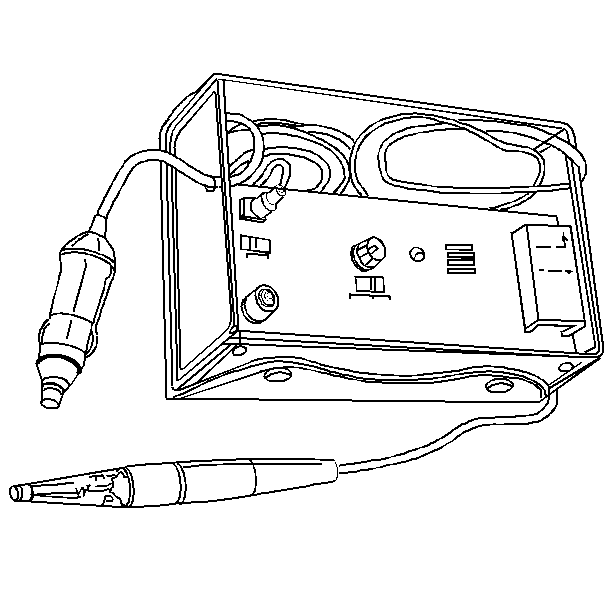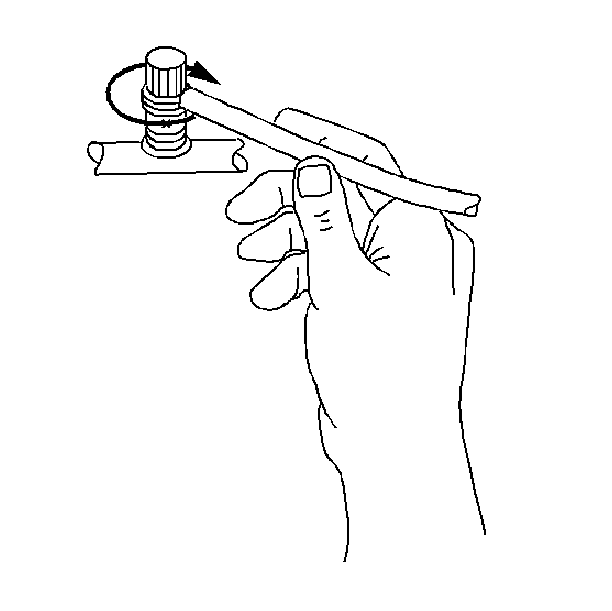Caution: Do not breathe the refrigerant vapor or the lubricant vapor. Exposure will irritate the eyes, the nose, and the throat. Use service equipment certified to SAE J2210 (R-134a recycling equipment) standards when removing R-134a from the system. If an accidental discharge occurs, ventilate the work area before resuming work. Refrigerant and lubricant manufacturers can supply additional health and safety information.
J 39400 Electronic Leak Detector
Test for leaks when a leak is suspected. Check for leaks after disturbing components, lines, or connections. Careful inspection is critical.

Caution: Perform tests with the engine off and as cool as possible. Do not operate the detector in a combustible atmosphere. The detector's sensors operate at a high temperature.

Calibrate the detector according to the instructions. Set the detector in accordance with the type of refrigerant being tested for. Set the GAS switch at R-134a before the test.

Common leaks are found at the refrigerant fittings or the connections.
Leaks are commonly caused by the following problems:
| • | Improper torque |
| • | Damaged O-ring seals |
| • | Dirt or lint on the O-ring seals |
Verify that the operation and maintenance of the detector is in accord with the instructions. Completely circle each joint at 25-5 mm (1-2 in) per second. The tip of the probe must be within 6 mm (0.25 in) of the surface. Do not block the air intake. The audible tone changes from 1-2 clicks per second into a solid alarm if a leak exists. Adjust the balance knob in order to maintain 1-2 clicks per second.
Important: Electronic leak detectors are sensitive to the following factors:
• Windshield washing solutions • Solvents and cleaners • Certain vehicle adhesives
Verify that surfaces are clean in order to prevent false readings. Insure that surfaces are dry in order to prevent damage to the detector.
Test the following locations:
| Important: Always follow the entire path of the refrigerant system when testing for leaks. Test all the following areas even after one leak has been confirmed. |
| • | The evaporator inlet and outlet |
| • | The accumulator inlet and outlet |
| • | The condenser inlet and outlet |
| • | Brazed and welded areas |
| • | Damaged areas |
| • | Hose couplings |
| • | The compressor rear head |
| • | The housing joints |
Service Ports/Access Valves
The sealing cap is the primary seal for the service ports. This cap contains a special O-ring that makes it leak-free. Verify that this cap is not missing or loose. Never use an incorrect cap.
Evaporator Core
Leaks in the evaporator core are difficult to find. Execute the following steps in order to test the core for leaks.
- Turn the blower fan on HI for at least 15 seconds. Then turn the blower off.
- Wait for 10 minutes.
- Remove the blower motor resistor. Refer to Blower Motor Resistor .
- Insert the leak detector probe as close to the evaporator as possible. A solid alarm means there is a leak.
- Get a flashlight. Search for the refrigerant oil on the core face.
Compressor Block Fitting and Shaft Seal
- Blow shop air behind and in front of the compressor clutch/pulley for at least 15 seconds.
- Wait for 1-2 minutes.
- Probe the area in front of the pulley. If the detector emits a solid alarm, a leak exists.
